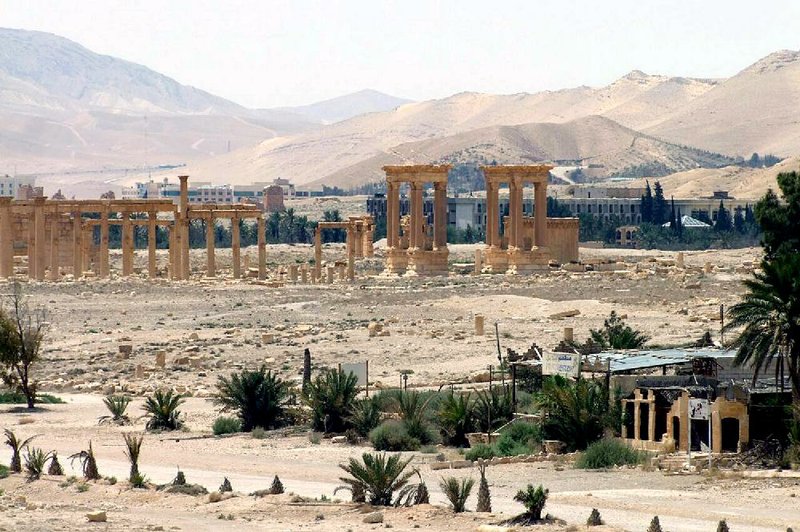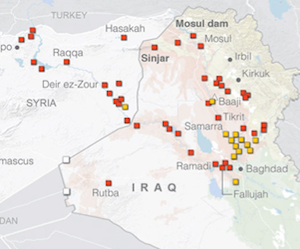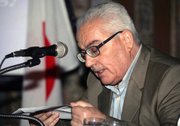DAMASCUS, Syria -- Islamic State militants beheaded a leading Syrian antiquities scholar who spent most of his life looking after the ancient ruins of Palmyra, then hung his body from a pole in a main square of the historic city, Syrian activists and the scholar's relatives said Wednesday.
According to Syrian state news agency SANA, Khaled al-Asaad, 81, was beheaded Tuesday in a square outside a museum for the 2,000-year-old Roman-era city, which is a UNESCO world heritage site.
A Palmyra-based Syrian opposition activist, who uses the name Khaled al-Homsi and identified himself as a nephew of al-Asaad, said Islamic State militants detained the scholar about three weeks ago. On Tuesday, they brought him in a van to a square packed with shoppers.
A militant then read out five accusations against al-Asaad, including that he was the "director of idols," represented Syria "at infidel conferences" and visited Shiite powerhouse Iran.
Then, another militant pulled out a knife, at which point al-Homsi said he left the square, unable to watch. Al-Asaad's body was later hung from a pole on a main street.
The Palmyra archaeological site was al-Asaad's "life," al-Homsi said. The activist said he fled the town later Tuesday.
Even when he grew old and could no longer go to the Roman ruins, al-Asaad "lived close to the site, and he could see the archaeological site from his house," al-Homsi said.
Maamoun Abdulkarim, the head of the Antiquities and Museums Department in Damascus, had earlier told SANA that al-Asaad's body was taken to Palmyra's archaeological site and hung from one of the Roman columns. But several activists denied that was the case.
Al-Asaad was "one of the most important pioneers in Syrian archaeology in the 20th century," Abdulkarim said. The Islamic State had tried to extract information from him about where some of the town's treasures had been hidden, the antiquities chief said.
SANA said al-Asaad had been in charge of Palmyra's archaeological site for four decades until 2003, when he retired. After retiring, al-Asaad worked as an expert with the Antiquities and Museums Department.
Al-Asaad, who held a diploma in history and education from the University of Damascus, wrote many books and scientific texts either individually or in cooperation with other Syrian or foreign archaeologists, SANA said. Among his titles are The Palmyra Sculptures and Zenobia, the Queen of Palmyra and the Orient.
He also discovered several ancient cemeteries, caves and the Byzantine cemetery in the garden of the Museum of Palmyra, the agency added.
"Al-Asaad was a treasure for Syria and the world," Khalil Hariri, al-Asaad's son-in-law who works at Palmyra's archaeological department, said by phone from the central Syrian city of Homs. "Why did they kill him?
"Their systematic campaign seeks to take us back into pre-history. But they will not succeed."
Hariri, who is married to al-Asaad's daughter, Zenobia, said his father-in-law had been a member of President Bashar Assad's ruling Baath party since 1954.
Since falling to the Islamic State in May, Palmyra's ancient site has remained intact but the militants destroyed a lion statue in the city dating back to the second century. The statue, discovered in 1975, had stood at the gates of the city's museum.
In early July, the Islamic State released a video showing the killing of 20 captured government soldiers in Palmyra's amphitheater. They were shot dead by young members of the militant group, armed with pistols. Hundreds of people were seen watching the killings.
Also Wednesday, an Islamic State suicide bomber targeted a predominantly Kurdish town in northeastern Syria, killing at least 13 people, SANA said.
The Britain-based Syrian Observatory for Human Rights said the explosion happened outside a local Kurdish police station in the city of Qamishli. It said more than 40 people were wounded in the blast.
The Islamic State claimed responsibility for the blast. The group has been battling Kurdish fighters in Syria since last year, and the extremists have carried out dozens of suicide attacks against the Kurds. The Kurdish fighters, aided by U.S.-led airstrikes, also have captured significant territory from the extremist group in northern Syria.
In other news, the United Nations' political chief is saying the Syrian government committed a war crime with its airstrikes on the Damascus suburb of Douma that killed about 100 people.
Information for this article was contributed by staff members of The Associated Press.
A Section on 08/20/2015


